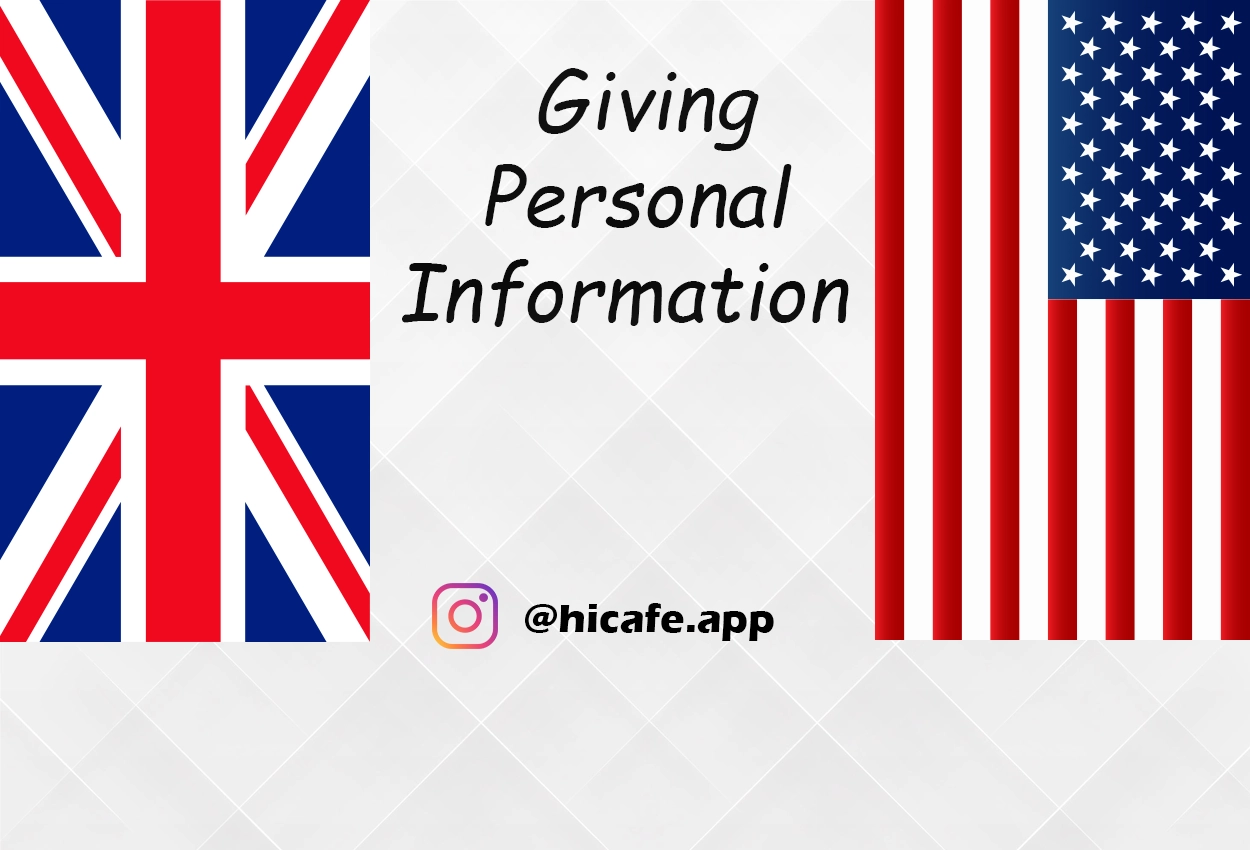Sharing personal information is a common part of daily life, whether it’s filling out a form or simply introducing yourself. This article provides a comprehensive guide to understanding typical questions and providing accurate responses. Here are some typical questions and ways for giving personal information in English.
Previous Conversation Tip Lesson
Giving Personal Information
Question words
Click here to practice this conversation tip in Instagram.
- Who (asks for a name or person)
- Whose (asks about the owner)
- Why (asks for a reason)
- Where (asks for a place)
- What (asks about a thing or a concept)
- Which (asks about a thing)
- When (asks for a time)
- How (asks about the way something happens)
(Also “how much” / “how many” to ask about quantity; “how long” to ask about duration; “how often” to ask about frequency.)
Remember the word order of questions:
(1. Question word – optional)
- Auxiliary do / does; verb to be
- Subject
- Verb + complement
- (1)Where (2)does (2)he (4)work?
- (1)Who (2)is (3)he?
- (2)Do (3)they (4)like watching horror films?
If there is no question word, the question starts with the auxiliary. The answer to a question like this is “yes” or “no”.
Typical questions
Click here to practice this conversation tip in Instagram.
- What’s your name?
(Give your first name then surname: “My name’s Sarah Johnson ” or “I’m Sarah Joshnson ”.)
What’s your first name?
– Sarah
What’s your surname / family name / second name?
– Johnson
Click here to practice this conversation tip in Instagram.
On a form, you can often see abbreviations before your surname.
- Mr (for a man)
- Mrs / Miss / Ms (for a woman: Mrs shows you are married, Miss shows you are single, Ms is if you’d prefer not to show your marital status – the female equivalent of Mr)
- Dr (to show the person is a medical doctor or has a PhD)
- What’s your date of birth?
It’s (day – month – year: “It’s the first of May, 1999”.)
Or:
When were you born?
(“On the first of May, 1999”.)
You can write 1 May 1999 or May 1, 1999. But when you say the date, use ordinal numbers:
1 – the first
2 – the second
3 – the third
4 – the fourth
5 – the fifth
6 – the sixth
7 – the seventh
8 – the eighth
9 – the ninth
10 – the tenth
11 – the eleventh
12 – the twelfth
…
20 – the twentieth
21 – the twenty-first
…
Either “the first of May, 1999” or “May the first, 1999”.
- What’s your marital status?
I’m married / single / divorced / widowed
Or:
Are you married?
- What’s your address?
Or:
Where do you live?
(Give the full address)
Name of the house (if there is one)
Street number and name
Town or city
County and Postcode
Country
For example:
Green Cottage
33, Main Road
St Louis
Canada
Conclusion
Being able to provide personal information in English is an essential skill for various social and official situations. By familiarizing yourself with the typical questions and appropriate responses, you can have interactions with confidence. Remember, always prioritize your privacy and share information responsibly.
Next Conversation Tip Lesson
Making Appointments in English
Related Conversation Lessons
None
Practice Conversation with HiCafe App
By using HiCafe App, you can join free discussion events and Practice English Conversation online or in-person and improve your verbal skills.
All Conversation Lessons
To see and read all of our conversation lessons, you can visit our Improve English Speaking Skills page.



